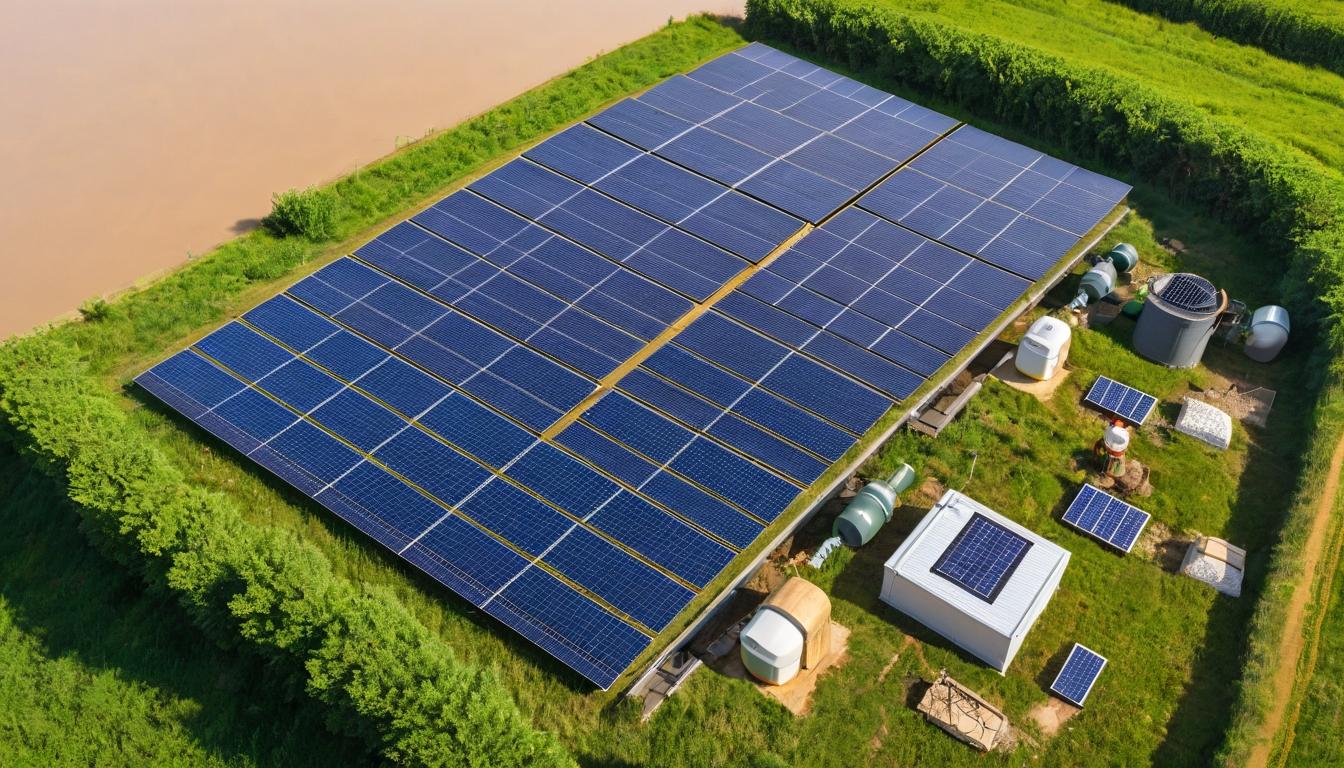While most people picture solar panels on suburban rooftops when they think about renewable energy, a much larger transformation is happening in places you'd never expect. From abandoned industrial sites to floating solar farms on reservoirs, the solar revolution is finding creative new homes that could fundamentally change how we power our cities.
Across the country, former landfills are being repurposed into massive solar installations. These contaminated sites, once considered useless for development, are now becoming valuable real estate for clean energy. In Massachusetts alone, over 40 former landfills have been converted to solar farms, generating enough electricity to power thousands of homes while turning environmental liabilities into community assets.
Meanwhile, floating solar—or 'floatovoltaics'—is making waves in the renewable energy sector. These systems, installed on reservoirs, lakes, and even coastal waters, offer surprising advantages beyond just saving land. The cooling effect of water can boost solar panel efficiency by up to 15%, while reducing water evaporation from reservoirs by as much as 70%. In water-scarce regions, this dual benefit is proving irresistible to utilities and municipalities.
Agricultural solar represents another frontier where innovation meets tradition. Rather than competing for land, new approaches allow farming and energy generation to coexist. Elevated solar panels provide shade for shade-tolerant crops while protecting them from extreme weather. In some cases, the microclimate created by solar arrays actually improves crop yields, creating a symbiotic relationship between food and energy production.
The economics of these alternative solar sites are becoming increasingly compelling. Landfill solar projects often qualify for additional incentives due to their environmental remediation benefits. Floating solar installations, while initially more expensive, offer long-term savings through reduced land acquisition costs and improved efficiency. As installation costs continue to drop—solar panel prices have fallen 90% in the last decade—these unconventional locations are becoming financially viable faster than anyone predicted.
Community solar projects are democratizing access to clean energy in ways that rooftop solar never could. For the nearly 50% of Americans who can't install rooftop solar because they rent, live in multi-unit buildings, or have shaded roofs, community solar gardens offer a way to participate in the renewable energy transition. Subscribers receive credits on their electricity bills while supporting local clean energy generation, creating a win-win for consumers and the environment.
Storage technology is the missing piece that's finally falling into place. The combination of solar with battery storage is transforming intermittent renewable energy into reliable power. Recent breakthroughs in battery chemistry and manufacturing are driving costs down while improving performance. The result? Solar-plus-storage projects can now compete with traditional power plants on reliability while offering cleaner, cheaper electricity.
Policy innovation is keeping pace with technological advancement. States are implementing creative programs that recognize the unique value of solar in different contexts. Massachusetts' SMART program provides extra compensation for solar on landfills and brownfields. New York's Value of Distributed Energy Resources (VDER) tariff recognizes the grid benefits of strategically located solar installations. These policies are creating markets that reward solar development where it provides the most value to the grid and community.
The workforce development angle often gets overlooked in discussions about solar expansion. These new types of solar projects require specialized skills—from engineers who understand floating structures to environmental scientists who can ensure safe development on contaminated sites. Community colleges and trade schools are rapidly developing training programs to prepare workers for these emerging opportunities, creating pathways to middle-class careers in the clean energy economy.
Looking ahead, the integration of solar with other technologies promises even more transformative possibilities. Solar carports in parking lots can power electric vehicle charging stations while providing shade. Building-integrated photovoltaics turn entire building facades into power generators. Solar roads, while still experimental, hint at a future where every surface might contribute to our energy needs.
The common thread connecting these diverse solar applications is their ability to turn constraints into opportunities. Limited land availability sparked innovation in floating solar. Environmental challenges inspired creative reuse of contaminated sites. Accessibility concerns drove the development of community solar models. Each challenge has become a catalyst for innovation, pushing the solar industry beyond its traditional boundaries.
What's clear is that the solar revolution is no longer just about putting panels on roofs. It's about reimagining our entire built environment as a potential source of clean energy. From the water we drink to the ground we walk on, solar technology is finding new ways to integrate with our lives while reducing our environmental footprint. The future of solar isn't just bright—it's everywhere.
The hidden revolution transforming solar energy beyond your rooftop




